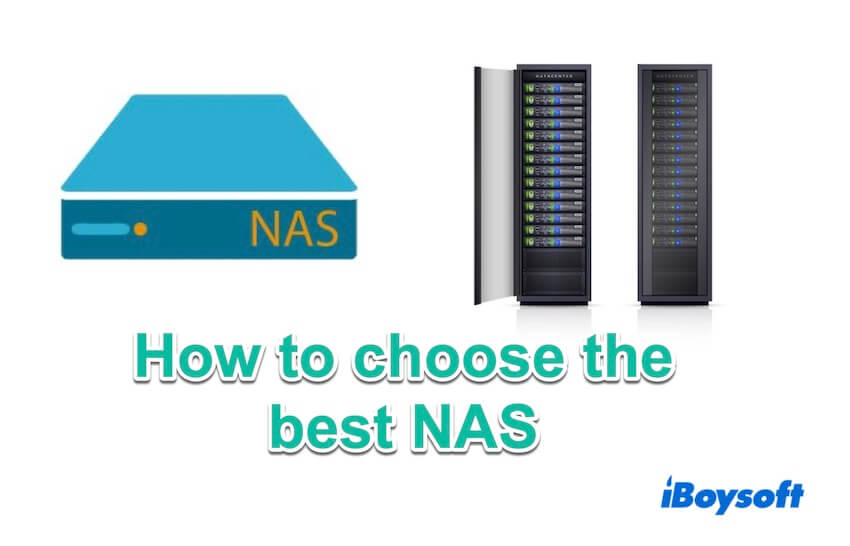When you store or backup something important and need a device to complete, you may have heard the Network Attached Storage (or NAS). But it seems so unfamiliar what is it and what it can do for our daily life and work.
If you doubt that "How does NAS work?" or " What is a NAS hard drive used for?" Please continue reading and finding the answers.
What is Network Attached Storage?
NAS, short for Network Attached Storage, one main part of cloud storage, is a versatile and cost-effective storage solution that is getting more and more popular in both homes and businesses. Simply speaking, it is a device connected to the network and has the function of storing data, also known as "network storage".
Network Attached Storage allows users and client devices whether Mac or Windows to access data stored on a centralized disk capacity, making the cross-platform user store and manage data more conveniently and seamlessly.
Here will give a brief overview of the components, the usage, and the benefits for real life. You can also learn another network file system DFS and the difference between DFS and NAS.
The Components of NAS
A Network Attached Storage device is a dedicated storage server, each NAS typically comprises these primary parts:
- 1. Hardware: NAS is typically equipped with a central processing unit CPU, RAM, and one or more hard drives. Some NASs may attach another NAS device or an external hard drive. They work together to run the NAS operating system, and manage data read and write operations on storage and hand user access.
2. Software: NAS comes with built-in operating systems that enable users to configure and manage storage, and access permissions and users. Common NAS operating systems include QNAP's QTS and Synology's DiskStation Manager.
3. Data Sharing: Users can connect to their NAS using diverse protocols(TCP or IPs) or even through web-based interfaces, achieving effortless file sharing and administration with the network interface.
The Usage of NAS
Sharing some files with others is simple. But when it comes to managing substantial quantities of streaming media files, the demand increases for larger capacity disks and more robust network process capabilities.
In a house or company, using NAS will be a good choice to do these things:
- Data Backup: NAS serves as an excellent backup solution for important files, ensuring data integrity and easy recovery.
- File Sharing: NAS allows users to access and share files from a centralized location, promoting collaboration and convenience.
- Media Streaming: NAS can often store and stream media content like music, videos, photos, etc.
- High-Security Management: NAS can create, test, and develop a personal website and use a NAS array to archive disaster recovery.
The Benefits of NAS
NAS is gaining popularity among businesses and families due to its cost-effectiveness, scalability, and efficiency. All of these can achieve seamless collaboration and constant data accessibility. Here are some advantages of Network Attached Storage.
- User-friendly: The set-up process and management of Network Attached Storage is simpler with its pre-installed streamlined operating systems.
- Speed: As a locally connected device, NAS is good at storing, transferring, and backuping files quickly.
- Control: Employing NAS means you can retain complete control over data access without relying on third-party storage services. And the users can access data from anywhere.
Now you can know the answer to “What is a NAS?” and “What can a NAS do for you?”, let others who are interested in network-attached storage find help here!
How to choose the best Network Attached Storage?

Network Attached Storage can play a great role in managing and storing your files, so how to choose a good NAS seems essential. Beyond considering prices, you should consider the various factors below:
- Storage capacity: Determine your storage needs and choose a NAS with enough capacity.
- Remote access: Check for the remote access capabilities if you need to access your NAS from outside your network.
- Performance: Select a NAS with sufficient processing power and RAM for your needs.
- Security: Check whether the NAS can provide native data encryption and strong network access control.
To access the network drive on your Mac, keep reading: How to Map a Network Drive on a Mac? [3 Ways]
Hope you can find the Network Attached Storage of your choice with the above suggestions! You can learn how to use NAS to set the NTFS for Time Machine backup. Then share your joy with others~
- QHow to open a NAS drive?
-
A
Firstly, click Go and choose Connect to Server, then enter your NAS’s IP address and click Connect. Next, select the folder that you want to connect and click OK.
- QWhat is NAS and SAN in storage?
-
A
NAS stands for network attached storage and SAN stands for storage area network. They can both solve data storage available to users. But the way they achieve is different.
- QIs NAS better than cloud storage?
-
A
NAS is more suitable for real-time data storage and cloud storage is better for storing small-size or highly sensitive data.
